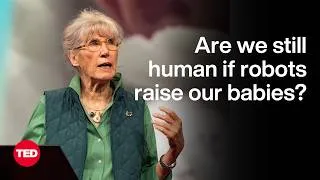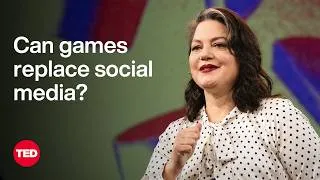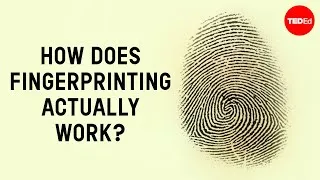These animals are also plants … wait, what? - Luka Seamus Wright
1,496,090 views ・ 2022-06-14
请双击下面的英文字幕来播放视频。
翻译人员: Alex Chang
校对人员: Yuwei Wu
00:07
Take a good look at this slug.
0
7712
2127
好好看看这条鼻涕虫。
00:09
No, not that— that’s a leaf.
1
9839
2044
不,不是那个——
那只是片叶子。
00:12
This slug.
2
12050
1459
这只。
00:13
There we go.
3
13760
1376
让我们仔细看看。
00:15
Elysia chlorotica may not look like much—
4
15136
3754
绿叶海天牛可能看起来不那么——
00:18
okay, it looks like a bright green leaf—
5
18890
2252
好吧,他确实看起来
像一片翠绿的叶子——
00:21
but it’s one of the most extraordinary
creatures around.
6
21142
3170
但它是这片环境中
最不寻常的生物之一。
00:24
Living in salt marshes
along the east coast of North America,
7
24687
3670
生活在北美东海岸的盐沼中,
00:28
it can go about a year without eating.
8
28357
2920
它可以一年不吃东西。
00:31
During that time, it lives like a plant.
9
31736
4004
在此期间,它像植物一样生活。
00:36
Generally speaking, animals are
what are called heterotrophs,
10
36324
3920
一般来说,动物是“异养生物”,
00:40
meaning they can’t produce their own food—
they’re consumers of other life.
11
40244
4922
意味着它不能自己生产食物,
而是其他生命体的“消费者”。
00:45
Plants, meanwhile, are autotrophs,
or producers:
12
45166
4296
植物,与此同时,作为
“自养生物”,抑或是“生产者”:
00:49
they can synthesize their own fuel
from sunlight, CO2,
13
49462
3962
它们可以通过合成阳光,
二氧化碳为自己提供能量,
00:53
and other inorganic compounds.
14
53424
2503
及其他无机化合物。
00:55
Plants do this by using organelles
called chloroplasts,
15
55927
4004
植物通过“叶绿体”的细胞
体实现上述功能,
00:59
which give them their bright colors
16
59931
1710
”叶绿体“赋予它们鲜亮的颜色,
01:01
and convert sunlight into food
through photosynthesis.
17
61641
3378
并通过光合作用将阳光转化为食物。
01:05
Elysia is what’s called a mixotroph:
18
65478
3670
绿叶海天牛是一种混合营养生物
01:09
it can both consume food, like animals,
19
69190
2586
它可以像动物一样消费食物,
01:11
and produce its own
through photosynthesis, like plants.
20
71776
4129
也可以通过光合作用自己制造食物。
01:15
In fact, Elysia steals its ability
to photosynthesize
21
75905
3670
实际上,绿叶海天牛的
光合作用的能力是”偷“的
01:19
from the algae it eats
by piercing the algal cells
22
79575
3546
它通过进食藻类,并咬破藻类细胞
01:23
with specialized pointy teeth,
called radula.
23
83121
3378
用它被成为”齿舌“,特别的尖牙。
01:26
It sucks the cell empty and digests
most of its contents,
24
86958
3837
它将细胞吸空,
并消耗其大部分物质,
01:30
but the chloroplasts remain intact.
25
90795
2502
留下”叶绿体“完好无损。
01:33
They’re incorporated into the epithelial
cells lining Elysia’s digestive system
26
93756
4797
它们被整合到绿叶海天牛
消化系统的上皮细胞中
01:38
that branches throughout its flat body.
27
98553
2252
并广泛分布在它扁平的身体上。
01:41
This makes the slug look
even more leaflike,
28
101347
2836
这让它看起来更像叶子了,
01:44
providing camouflage as well as food.
29
104183
2920
不仅提供食物,还能作为伪装。
01:47
As incredible as this adaptation is,
30
107854
2377
如此令人难以置信的适应性,
01:50
there are more than 70 species of slug
that steal chloroplasts from their food.
31
110231
5923
竟然有多达 70 多种鼻涕虫
从食物中窃取叶绿体。
01:56
What makes Elysia
and a few closely related species
32
116154
3420
让绿叶海天牛及少数相近种群,
01:59
in the Mediterranean and Pacific unique
33
119574
2627
成为地中海和太平洋中
独一无二的存在
02:02
is how long they can hold
onto chloroplasts—
34
122201
2920
是它们能够将
叶绿体保存的足够久——
02:05
most other slugs keep them
for a few weeks at most.
35
125121
3295
其他大部分的鼻涕虫
最多能保存几周。
02:08
This longevity seems to be due
to the survival abilities
36
128708
3503
保存的长度取决于
以下两者的生存能力
02:12
of both plastids and slugs.
37
132211
2670
即植物细胞的质体和鼻涕虫本身。
02:15
Specifically, the chloroplasts
of certain algae
38
135089
3212
具体来说,某些特定藻类的叶绿体
02:18
can repair their own
light-harvesting systems,
39
138301
3169
能够自我修复阳光吸收系统,
02:21
while most chloroplasts are thought
to rely on their host cell
40
141470
3462
而大多数叶绿体
则依赖于它们的宿主细胞
02:24
and its genes for repairs.
41
144932
2086
及其修复基因。
02:27
This makes the chloroplasts
able to sustain themselves
42
147393
2961
这使得叶绿体能够维持自身存活
02:30
for longer inside the slug.
43
150354
2378
在鼻涕虫体内更长的时间。
02:33
Meanwhile, the slug adjusts its gene
expression
44
153274
2878
与此同时,鼻涕虫通过
调整自身的基因表达
02:36
to improve its relationship
with the chloroplasts
45
156152
2878
改进与叶绿体的相互作用
02:39
and removes damaged plastids
46
159030
2377
并去除受损的质体。
02:41
to avoid accumulation
of potentially damaging chemicals.
47
161407
3128
从而避免具有潜在
破坏性化合物的累积。
02:44
Though few species can steal organelles
from another species’ cell,
48
164952
4380
尽管少数物种能够从
其他物种细胞中窃取细胞体
02:49
these slugs are far from alone
in getting an assist from plants.
49
169332
4254
能从植物获得帮助这点来看,
鼻涕虫并不孤单。
02:53
Organisms as diverse as corals,
50
173711
2753
珊瑚有着丰富的生物多样性,
02:56
giant clams and sponges have symbiotic
algae living inside their cells,
51
176464
5672
巨蚌和海绵与体内的藻类共生,
03:02
supplying them with organic compounds
through photosynthesis.
52
182136
4129
通过光合作用
为它们提供有机化合物。
03:06
In turn, they supply their little helpers
with shelter and inorganic compounds.
53
186807
5339
作为回报,它们为这些小助手们
提供庇护所和无机化合物。
03:12
Some of these mixotrophs even transmit
the algae to their offspring.
54
192146
4171
其中有些混合营养生物
甚至将藻类传给自己的后代。
03:16
Without the aid of these algae,
55
196734
1960
没有这些藻类的帮助,
03:18
filter-feeding corals, clams, and sponges
would not gain enough nutrition
56
198694
4672
滤食性珊瑚、蚌壳和海绵
无法获得充足的营养
03:23
in the nutrient-poor tropical ocean,
57
203366
2460
在营养匮乏的热带海洋中,
03:25
and the dazzling coral reefs they build
simply would not exist.
58
205826
4338
令人瞠目结舌的珊瑚
礁根本无法建成。
03:30
Mixotrophy even cuts both ways:
59
210665
2669
混合营养生物甚至可以
向两个方向转变:
03:33
an alga called Tripos furca can consume
several microscopic animals a day,
60
213334
6089
一种叫骨叉角藻的藻类
每天可以吃几只微型动物,
03:39
allowing it to survive
in darkness for weeks.
61
219423
3212
帮助它在黑暗中存活数周。
03:42
Tripos is in turn eaten
by other mixotrophic algae,
62
222885
3754
角藻又被其他混合营养藻类吞食,
03:46
providing frequent opportunity
for exchange of organelles
63
226639
3420
为交换细胞器提供充分的可能
03:50
such as chloroplasts.
64
230059
1752
比如叶绿体。
03:52
This seems to allow some algae
to survive in parts of the dark ocean
65
232061
4296
这似乎帮助藻类
在部分黑暗的海洋中生存
03:56
such as the Mariana Trench,
66
236357
1960
比如马里亚纳海沟,
03:58
which plants otherwise wouldn't
be able to inhabit.
67
238317
3003
植物根本无法在那里生存。
04:02
The processes by which Elysia
becomes photosynthetic
68
242071
3378
绿叶海天牛进行光合作用的能力
04:05
and Tripos switches between feeding modes
69
245449
2878
以及角藻在两种饮食模式中切换
04:08
are reminiscent of what scientists believe
led to the origin of all plants.
70
248327
5130
被科学家认为
是所有植物起源的标志。
04:13
Single-celled animals preyed
on cyanobacteria.
71
253457
3921
蓝藻捕食单细胞动物。
04:17
Some of these tiny plants were not
digested and lived on in the animal cells,
72
257378
5088
这些微小植物并无法
消化和吸收这些动物细胞,
04:22
eventually giving rise to chloroplasts.
73
262466
3796
最终形成了叶绿体。
04:26
But these first eukaryotic plants were
soon consumed by other animals,
74
266262
4671
但这些最早的真核植物
很快就被其他动物吃掉了,
04:30
which hijacked the precious chloroplast,
just like Elysia.
75
270933
3921
并被劫持了珍贵的叶绿体,
就像绿叶海天牛一样。
04:35
And following the example
of eating and being eaten,
76
275688
3045
吃与被吃的情况不断重复,
04:38
we’ve seen in the case of Tripos,
77
278733
2043
正如我们在角藻的案例中看到的,
04:40
this chloroplast heist happened
up to three times,
78
280776
3295
叶绿体在这个过程中被劫持了三次,
04:44
giving rise to plastids
with four membranes
79
284071
2878
产生了具有四层膜的质体
04:46
and the ocean’s most productive
plants and forests.
80
286949
4004
成为海洋中最富
生产力的植物和森林。
New videos
Original video on YouTube.com
关于本网站
这个网站将向你介绍对学习英语有用的YouTube视频。你将看到来自世界各地的一流教师教授的英语课程。双击每个视频页面上显示的英文字幕,即可从那里播放视频。字幕会随着视频的播放而同步滚动。如果你有任何意见或要求,请使用此联系表与我们联系。







